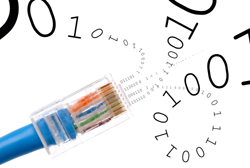The European sixth Internet Protocol version
Visiting this article means that a certain address has been selected with the Internet browser. Behind the simple steps when surfing the Internet the underlying application of a certain Internet Protocol is required. Currently the fourth version of this protocol is in use, the IPv4. Back in the 1990s it was clearly realised that continuing growth of the use of the Internet would sooner or later result in network address exhaustion. The next generation Internet protocol, the so called sixth version uses one hundred twenty eight bits for each address compared to the thirty two bits used by the current protocol. The resulting amount of permitted addresses is billions and billions of times larger than the amount allowed by IPv4, the protocol in use at present. Apart from the enormous amount of addresses the IPv6 allows, many more benefits stem from using the new protocol. Network layer security, multicasting and numerous possible services and applications will accompany the application of the sixth version of the protocol. Europe paved the way to the world wide web, creating the first Internet at CERN. Now with the 6NET project it is helping the progression to the next Internet generation. An 18 million euro project, with over 30 partners from all over Europe has set up the first new protocol network. Ivy league academic, commercial and research institutes are among the 6NET project partners. The remarkable amount of seven million euro from the total budget comes from the project partners themselves. A fact that clearly indicates the huge interests at stake. The network connects 16 countries from Europe, North America and the Asia-Pacific region. Multiple management tools have already been deployed and tested. The 6NET project shows that the IPV6 protocol will easily meet future Internet demands.







